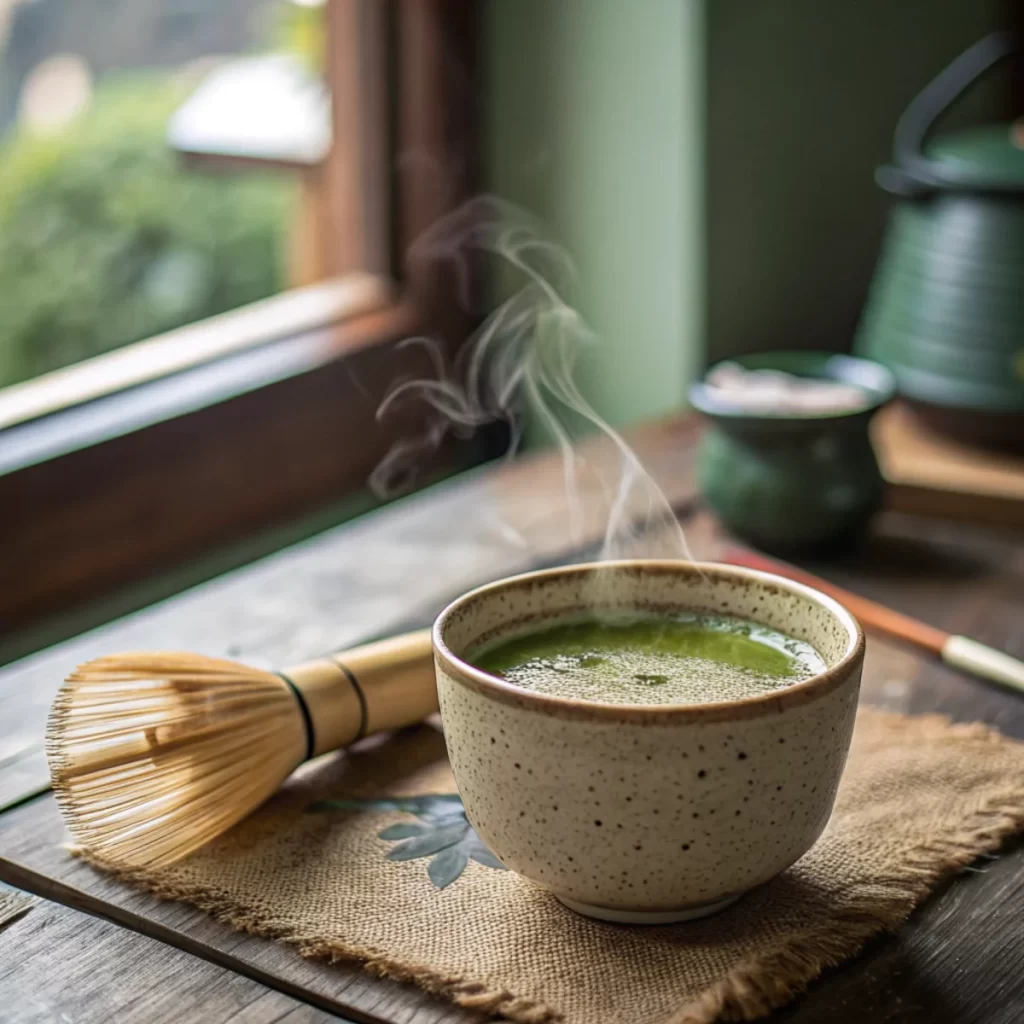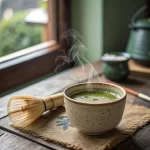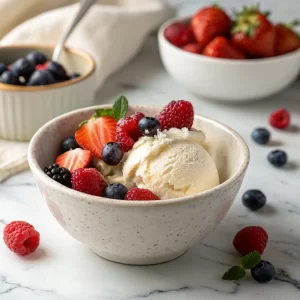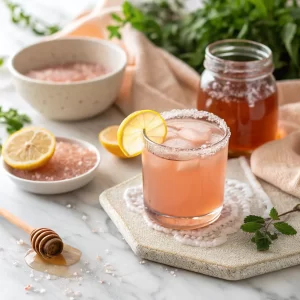Japanese Mounjaro recipe—yep, that’s what we’re diving into today. And let me just say, if you’re looking for something that feels like a warm hug from your kitchen while still supporting your wellness goals, you’ve hit the jackpot.
Now, I get it—recipes like this can sound a bit mysterious. What even is a Japanese Mounjaro recipe, right? That’s exactly what we’re going to uncover here. You’ll learn not only what goes into this flavorful powerhouse but also why it’s gaining traction in healthy cooking circles. We’ll explore its roots (spoiler alert: Japan’s culinary traditions are full of surprises) and break down how you can easily make this at home—even if your pantry’s kinda bare.
Honestly, when I started experimenting with wholesome meals like this Japanese Mounjaro recipe—after years in New York’s intense restaurant scene—I was blown away by how healing, simple foods can be. This one especially stuck with me. Maybe it’s the blend of umami and earthiness, or maybe it’s the fact that it makes you feel good from the inside out. Either way, it deserves a spot in your rotation.
👉 Looking for something refreshing with a healthy twist? Don’t miss our iced matcha latte recipe for a perfect pairing.
Let’s dig in.
Table of Contents
Why You’ll Love This Japanese Mounjaro
• It’s surprisingly quick to make—ideal for those “I don’t wanna cook” nights.
• Packed with clean, real-food ingredients that actually taste amazing.
• Inspired by traditional Japanese flavors but with a fresh, modern vibe.
• You can batch it up for meal prep—big win for busy folks.
• It’s comfort food that fuels you instead of slowing you down.
This Japanese Mounjaro isn’t just about what’s on your plate—it’s about how you feel after eating it. That’s the Mounjaro magic.
Ingredients You’ll Need for This Japanese Mounjaro Recipe
To craft this revitalizing Japanese Mounjaro recipe, gather the following natural ingredients:
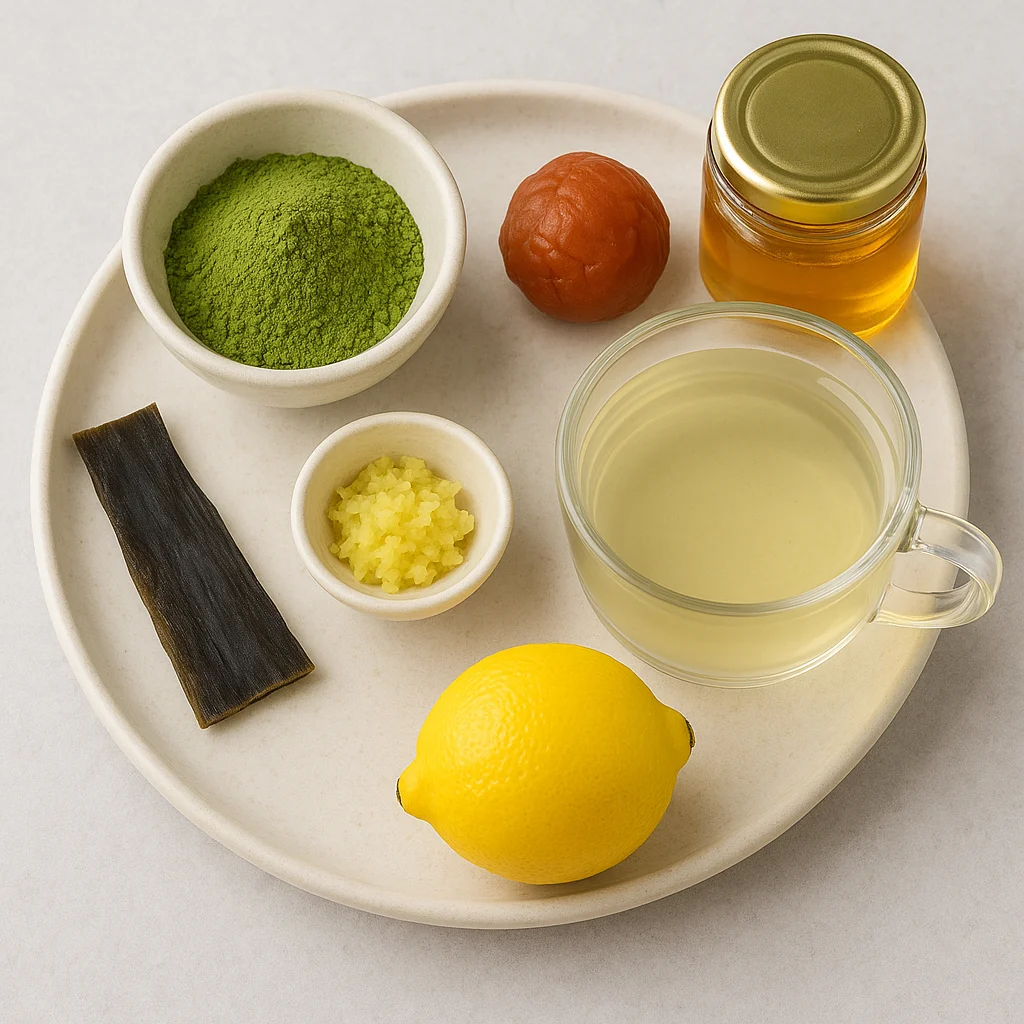
- 1 teaspoon matcha powder (preferably high-quality)
- 1 umeboshi plum (or 1 teaspoon umeboshi paste)
- 1 slice fresh ginger, finely grated
- 1 small piece dried kombu (about thumb-sized)
- 8 ounces warm water (approximately 160–170°F)
- Optional: Splash of lemon juice or a drizzle of honey for added flavor
These ingredients combine to create a detoxifying drink that supports digestion, boosts metabolism, and provides a gentle energy lift, rooted in centuries-old Japanese wellness traditions.
How to Make the Perfect Japanese Mounjaro at Home
The beauty of the Japanese Mounjaro recipe is how simple yet purposeful it is. It’s less of a “recipe” and more of a wellness ritual—one that blends ancient ingredients into a warm tonic that feels like a reset button for your body.
Step 1: Warm the Water Just Right
Don’t skip this—temperature matters here.
- Heat 8 ounces of water until it reaches about 160–170°F. You want it warm but not boiling. Too hot, and you’ll destroy the beneficial compounds in matcha and umeboshi.
Step 2: Infuse the Kombu
- Add a small piece of dried kombu to your cup and let it steep for 5–10 minutes. This helps extract minerals and umami depth.
- Remove the kombu before moving on.
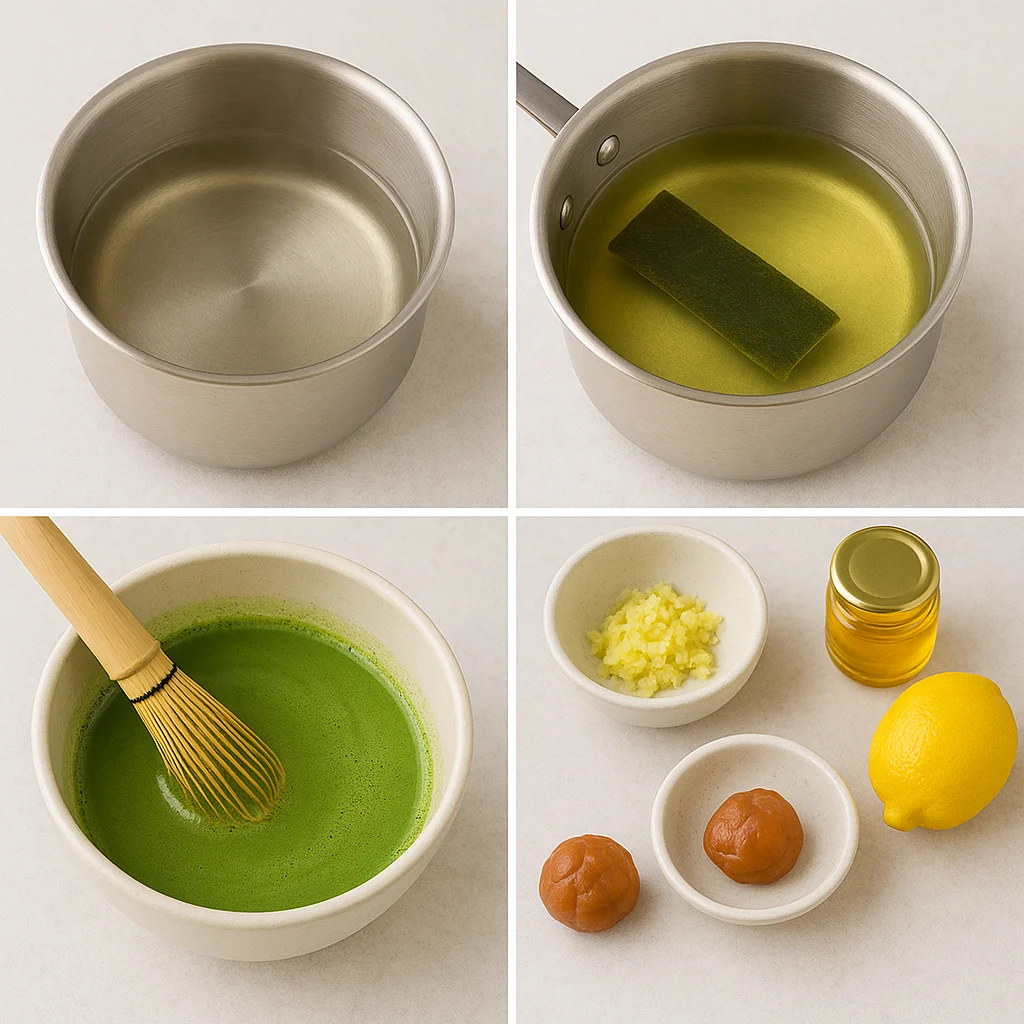
Step 3: Add the Functional Ingredients
- Stir in 1 teaspoon matcha powder using a bamboo whisk or small frother until dissolved and slightly frothy.
- Add 1 finely grated slice of fresh ginger and 1 umeboshi plum (or 1 tsp of umeboshi paste). Mash gently to help release the flavor.
Step 4: Optional Flavor Boosts
- For a touch of brightness, add a splash of lemon juice.
- Craving a little sweetness? A tiny drizzle of raw honey works wonders.
Step 5: Sip Slowly and Mindfully
This isn’t just a drink—it’s a pause. Sip slowly, ideally on an empty stomach in the morning or mid-afternoon to reset your system.
Looking for another recipe with functional flair? Check out our high-protein brownie recipe for a treat that fuels your day, not derails it.
This whole process takes under 10 minutes, but the impact? It lingers—in the best way.
Tips and Tricks for Success with Japanese Mounjaro Recipe
Honestly, this Japanese Mounjaro recipe is so simple—it’s hard to mess up. But hey, a few pro tips can still take it from “pretty good” to “I need this every morning” status.
Don’t Boil the Water—Seriously
- Matcha and umeboshi are sensitive to heat.
- Stick to 160–170°F water (think just-steamed, not boiling).
- Boiling water = bitter taste + dead nutrients = sad sip.
Use Real Umeboshi, Not Just Any Pickled Plum
- Authentic umeboshi plums pack a probiotic and alkaline punch.
- Umeboshi paste is okay, but the whole plum? Way more powerful.
Go for High-Quality Matcha
- This isn’t the time for bargain bin powder.
- Look for ceremonial-grade matcha—bright green, smooth, and clean tasting.
- Low-grade matcha can make your drink taste, well, like lawn clippings.
Steep the Kombu Just Enough
- Kombu doesn’t need to sit forever.
- 5–10 minutes is enough to extract minerals without overpowering the drink.
- Too long = seaweed soup (unless that’s your thing).
Make It a Ritual
- Drinking this Japanese Mounjaro recipe isn’t just about digestion or metabolism.
- It’s about slowing down—giving your body what it craves before it even asks.
Need more functional tricks in your daily routine? Discover great ideas like our iced strawberry matcha latte recipe—a chilled spin on wellness.
This isn’t a trendy “detox.” It’s rooted in tradition, and when made right, it feels like your whole body is saying thank you.
How to Store and Reheat Your Japanese Mounjaro Recipe
So you made the Japanese Mounjaro recipe—maybe even doubled up for later (smart move). Now, what’s the best way to keep that magic intact?
Can You Store It?
- Yes, but only short-term.
- This tonic is best fresh, but if needed, store it in a glass jar or bottle with a tight lid.
- Keep it refrigerated for up to 24 hours—after that, the flavor and nutrients start to break down.
Best Reheating Method
- Reheat gently—never microwave!
- Pour your stored Mounjaro into a small pot and warm it on low heat.
- Make sure it doesn’t reach a boil (remember: matcha and umeboshi don’t love high temps).
- Stir well to recombine any settled ingredients before sipping.
Quick Fresh Hack
- If you’re in a rush, just prep the kombu water ahead of time.
- Steep it, strain it, and keep that part chilled.
- When ready, just warm it up and mix in the rest (matcha, ginger, umeboshi).
This drink really is best enjoyed when it’s freshly made—warm, vibrant, and full of intention.
FAQs About This Japanese Mounjaro
Let’s clear up some of the most common questions people have about the Japanese Mounjaro. Whether you’re curious or skeptical (we’ve all been there), here’s what you need to know.
How do you make Japanese Mounjaro?
It’s simple! Just steep dried kombu in warm water, then stir in matcha, grated ginger, and umeboshi. Mix gently until combined, then sip it warm. For a full breakdown, scroll back to our step-by-step instructions or bookmark this guide for later.
Does natural Mounjaro work?
Honestly? It depends on what you mean by “work.” If you’re talking about supporting digestion, boosting energy, and feeling more grounded, then yes—this natural tonic has stood the test of time in Japanese wellness culture. It’s not a miracle, but it’s definitely a gentle, nourishing addition to a mindful routine.
What ingredients are in Mounjaro?
The traditional Japanese Mounjaro recipe includes matcha powder, umeboshi (pickled plum), fresh ginger, dried kombu, and warm water. That’s it. Just five ingredients that team up to soothe your gut, energize your body, and reset your system—naturally.
What are the ingredients of the Brazilian Manjaro?
The Brazilian version is a whole different vibe! It’s a tropical-style tonic, typically featuring ingredients like guarana, acai, ginger, and lemon. Curious? Discover the full Brazilian Mounjaro recipe and explore how Brazil approaches functional wellness.
Still have questions? Drop them in the comments—we love chatting Mounjaro magic!
What to Serve With This Japanese Mounjaro Recipe
The Japanese Mounjaro recipe is a revitalizing tonic that pairs wonderfully with light, nourishing dishes. Here are some suggestions to enhance your wellness journey:
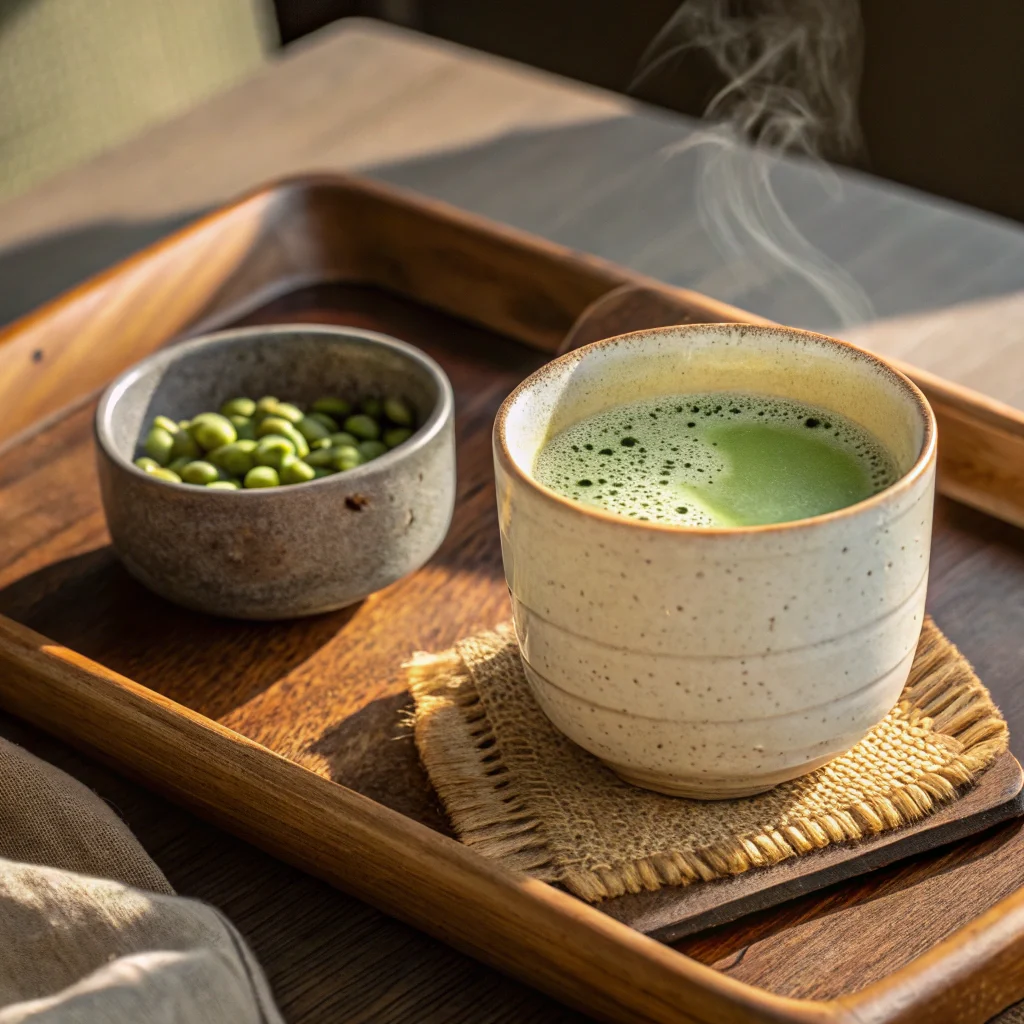
1. Steamed Edamame with Sea Salt
A classic Japanese appetizer, steamed edamame sprinkled with sea salt offers a protein-rich, satisfying snack that complements the detoxifying properties of the Mounjaro drink.
2. Miso Soup with Tofu and Wakame
A warm bowl of miso soup, enriched with tofu cubes and wakame seaweed, provides a comforting and umami-rich accompaniment, aligning with the traditional Japanese palate.
3. Grilled Salmon with Lemon and Ginger
Grilled salmon seasoned with lemon and ginger not only echoes the flavors of the Mounjaro drink but also delivers omega-3 fatty acids, supporting overall health.
4. Pickled Vegetables (Tsukemono)
Assorted Japanese pickled vegetables, such as cucumbers, daikon, and carrots, offer a tangy crunch that balances the earthy tones of the Mounjaro beverage.
5. Brown Rice Onigiri with Umeboshi Filling
Brown rice onigiri (rice balls) filled with umeboshi provide a hearty yet light option, integrating the plum’s digestive benefits found in the Mounjaro drink.
These pairings not only enhance the flavor profile of your meal but also contribute to a balanced and wholesome dining experience.
Final Thoughts on the Japanese Mounjaro Recipe
Honestly, this Japanese Mounjaro is more than just a warm drink—it’s a quiet moment in your day, a return to something simple and grounding. Whether you’re new to Japanese wellness traditions or you’ve been down this path for a while, adding this little ritual to your routine can feel like a reset button, both physically and mentally.
It’s not flashy. It’s not complicated. But it works—gently, consistently, and in a way that just feels good. From the first earthy sip to the last warming note of ginger, it’s a reminder that the best “recipes” are often the simplest.
For more healthy twists on comfort food, follow me on Facebook, check out new ideas on Pinterest, and read more of my stories on Medium.
PrintJapanese Mounjaro recipe
This warming Japanese Mounjaro recipe blends traditional wellness ingredients like matcha, umeboshi, and kombu into a simple tonic that supports digestion and energy.
- Prep Time: 5 minutes
- Cook Time: 5 minutes
- Total Time: 10 minutes
- Yield: 1 serving 1x
- Category: Drink
- Method: Infused
- Cuisine: Japanese
Ingredients
- 1 tsp matcha powder (high-quality preferred)
- 1 umeboshi plum or 1 tsp umeboshi paste
- 1 slice fresh ginger, finely grated
- 1 small piece dried kombu (thumb-sized)
- 8 oz warm water (160–170°F)
- Optional: splash of lemon juice or drizzle of raw honey
Instructions
- Heat 8 oz of water to 160–170°F—warm, not boiling.
- Add dried kombu and steep for 5–10 minutes; then remove it.
- Whisk in matcha powder until smooth and slightly frothy.
- Add grated ginger and umeboshi (or paste); mash lightly to infuse.
- Optional: add lemon juice or honey for flavor enhancement.
- Sip slowly and mindfully, preferably on an empty stomach.
Notes
Use ceremonial-grade matcha and authentic umeboshi for best results. Avoid boiling water to preserve nutrients. Enjoy as part of a mindful morning ritual.
Nutrition
- Serving Size: 1 cup
- Calories: 20
- Sugar: 1g
- Sodium: 300mg
- Fat: 0g
- Saturated Fat: 0g
- Unsaturated Fat: 0g
- Trans Fat: 0g
- Carbohydrates: 4g
- Fiber: 1g
- Protein: 1g
- Cholesterol: 0mg
Keywords: japanese mounjaro, matcha, umeboshi, wellness drink, ginger tonic, digestion support
